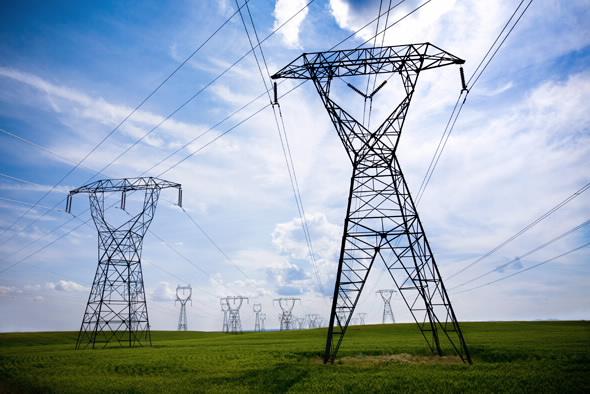

Published on the 21st July 2015 by ANSTO Staff
Superconductors that could transport electricity without a loss of energy would save billions of dollars and have a considerably smaller environmental impact than other options.
 |
| Scientists are a step closer to understanding superconductivity that could make electricity transmission more efficient. |
A large international collaboration has identified a new iron-based compound that demonstrates superconductivity on one-dimensional ladders of iron atoms. Until recently, superconductivity in iron-based compounds had only been observed in iron pnictides on two-dimensional square lattices.
In a paper published today in the prestigious journal Nature Materials, Hiroki Takahashi from Nihon University and co-authors from Japan, China and Australia, including ANSTO’s Instrument Scientist and adjunct A/Prof of University of SydneyMax Avdeev, revealed that barium iron sulphide (BaFe2S3) exhibits superconductivity under pressure (11 GPa) at a temperature below 14 degrees K. Other collaborators on the paper included researchers from the Tohoku University, University of Tokyo, National Institute for Materials Science, and Toyota Physical and Chemical Research Institute (Japan) and Jilin University (China).
The iron-based materials share similarities with a large class of copper-based materials, cuprates that first demonstrated superconductivity at high temperature. The superconductivity in cuprates occurs most commonly on two-dimensional square planes but has also been found in quasi-one-dimensional ladder structures.
“Barium iron sulphide is a long-sought analog of superconducting copper-based ladder materials” said Avdeev.
 |
| The electronic phase diagram in the pressure–temperature (P–T) plane, including the superconducting (SC) transition temperatures (Tc) of all samples. The Tc of Sample No. 6 was obtained by the resistivity measured using the cubic anvil press. TN indicates the antiferromagnetic (AF) transition temperature, expected to be suppressed by the application of pressure. |
A wide range of scientific methods was used in this study. “The experiments at ANSTO using the high-resolution powder diffractometer Echidna helped characterise the magnetic ordering developing in the material at ambient pressure below 119 degrees K”, explained Avdeev. Synthesis of the compound and all the other physical property measurements were done by other collaborating organisations, led by the corresponding authors Hiroki Takahashi (Nihon University) and Kenya Ogushi (University of Tokyo and Tohoku University).
By using high pressure, investigators were able to acquire additional information about the microscopic mechanisms at work and the appearance of superconductivity. They reported the superconducting transition occurring between 10 and 11 GPa, where there was a sudden decrease in resistance at 13 degrees K.
Ceramic superconducting materials were discovered by IBM in 1986. They conducted electricity perfectly at temperatures much higher than was thought possible on theoretical grounds. Not only did the discovery open the door to high-field electromagnets and electrical transmission without losses, especially if a room-temperature superconductor could be found, but it also defied the conventional wisdom in theoretical physics.
“Although the discovery received the 1987 Nobel Prize in Physics, the theoretical explanation of this phenomenon remains one of the greatest unsolved challenges in physics,” said Rob Robinson, Acting Group Executive, Nuclear Science and Technology at ANSTO.
It was initially thought that this high-temperature superconductivity only occurred with copper, but in 2008 a new class of similar iron-based superconductors was discovered. The discovery of superconductivity in the ladder-type BaFe2S3 affords a new platform for studying the fundamentals of iron-based superconductivity.
Read the full journal article in Nature MaterialsDoi: 10.1038/NMAT 4351.